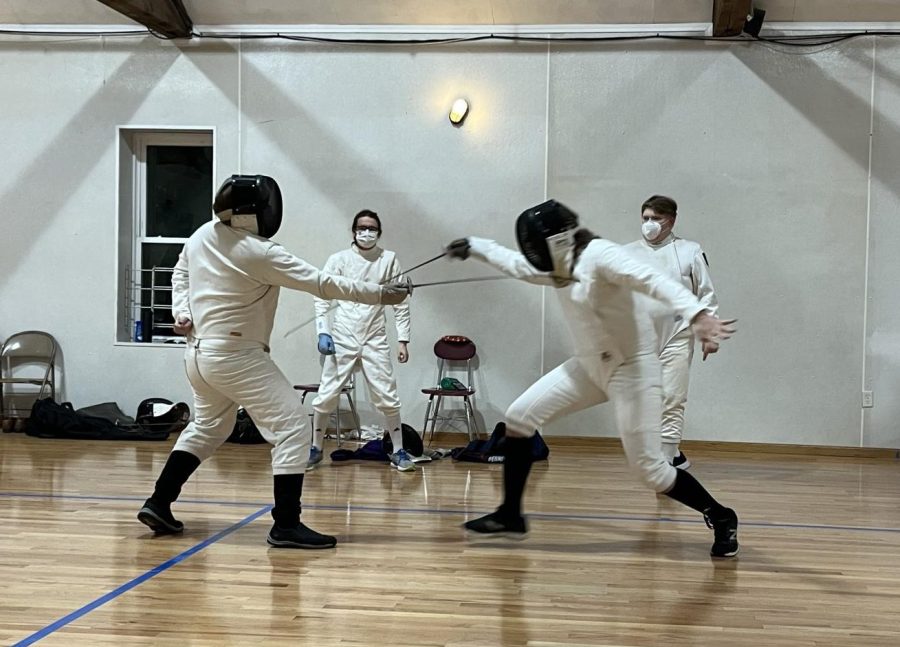Stoughton Takes a Stab at Fencing
Stoughton has a fencing team, even though most may not be aware of it. They practice in the Youth Center on Tuesdays and Thursdays from 7-9 p.m. The practices are run and instructed by Joseph Monarski—who’s also a substitute teacher at the McFarland Middle School. The team was established around 2000, but really began to pick up around 2003.
“I think the sport has a lot to offer an athlete. It requires a lot of rigorous training, [and] a lot of athleticism. People don’t appreciate how athletically demanding the sport is and it’s a great combination of strategy and reflex. […] The other thing that struck me was that the community of fencers was a pretty neat group of people,” Monarski says.
There are three kinds of fencing, which includes the foil, the épée, and saber. The Stoughton fencing team focuses mainly on the foil technique. In said foil technique, the point is given to whoever touches the torso of the opponent with your sword, up until five points. Occasionally, namely more often in tournaments, the match will go up to 15 points, with a minute break in between every five points.
“[In] foil fencing, the main thing to understand about it is [that you have to] score at touch. You have to hit with the point […] and it can’t be a snap. It’s the point thrusting in […] so in modern fencing, the scoring only counts if it’s on the torso,” Monarski says.
Senior Owen Weitner, a member on the team, shares his view of the technique.
“The purpose of foil is to emulate a classic duel of sorts. You have to hit on the torso. […] You count up until you get five touches and then you win,” Weitner says.
Fencing is based around an old concept, but many similar aspects remain. The sport itself goes back to France where techniques were used to disable an enemy. Each technique corresponds to one of the three ways to do this. The saber, for example, was mainly used when fighting on horseback. Therefore, you’re only allowed to touch torso and above, similar to the old way of fighting.
“[The foil] was developed to train young men back in the day […] and to train them how to use the weapon effectively on the battlefield,” Monarksi says.
Despite any possible misconceptions about the sport, it is safe. There’s a rubber stopper on the end of the weapon that prevents any substantial harm. Additionally, there are always people watching the game for safety reasons and to referee.
“The main thing that keeps us safe is the amount of protection we wear: masks [and] very heavy and thick equipment. […] The most dangerous thing that can happen in fencing is when a foil breaks. That’s the only time where you end up with anything more than a bruise,” Weitner says.
Anyone interested in joining the fencing team is encouraged to stop by during practice times. There is a fee of $45 if you have your own equipment, or $65 if you rent equipment. You’re billed every three months, and the money generally goes to renting practice spaces, among other things.
“It’s not like we have […] beginning classes starting on January 4th. Beginners can come in at any time and I work with them on the side,” Monarski says. “I’ve got fencers who come from Fitchburg, Madison, [and] one from McFarland.”
It’s easy to learn whether fencing is your thing or not, plus it comes with a community of fencers that enjoy the sport and encourage each other.
“I wasn’t a stellar athlete, but I knew I wanted to stay involved. I was a freshman at Madison [college] and I saw a flyer for the Madison fencing club. I thought, ‘Okay, that sounds interesting. I’ll give it a try,’ and I just got hooked,” Monarski says.

Naomi is a senior, and this is her third year on staff! She is this year’s associate and the website manager. She joined the Norse Star because it was...






